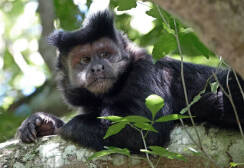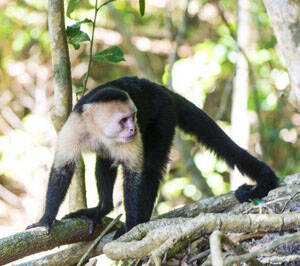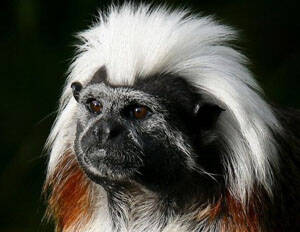
Sapajus robustus,
Sapajus robustus, Crested Capuchin、Robust Tufted Capuchin,Schopfkapuzineraffe, Macaco Prego、macaco prego de crista,Crested Capuchin
Sapajus robustus (scientific name: Sapajus robustus) English Crested Capuchi···

Sapajus nigritus
Sapajus nigritus, Black-horned Capuchin、Black Capuchin、Black-capped capuchin, Sajou、Sapajou, Capuchino、Mono-capuchino, Schwarzer Kapuzineraffe
Black-horned Capuchin (scientific name: Sapajus nigritus) is called Black-ho···

Sapajus libidinosus
Sapajus libidinosus, Bearded Capuchin、Black-striped Capuchin,Rückenstreifen-Kapuzineraffe, Macaco-prego、Macaco-prego-amarelo
Bearded Capuchin (scientific name: Sapajus libidinosus) English Bearded Capu···

Sapajus flavius
Sapajus flavius, Blonde Capuchin、 Marcgrave's Capuchin Monkey, Blonder Kapuzineraffe
Blonde Capuchin (scientific name: Sapajus flavius) English Blonde Capuchin, ···

Sapajus cay
Sapajus cay,Azara’s Capuchin、 Hooded Capuchin、yellow bearded capuchin,Sajou brun、Sapajou、Sapajou du Paraguay, Capuchino de Azara、 Mono、Mono-Capuchino, Azara-Kapuzineraffe, Scimmie Cappucine
Sapajus cay (scientific name: Sapajus cay) is called Azara’s Capuchin, Hood···

Sapajus apella
Sapajus apella,Black-capped Capuchin、 Guianan Brown Capuchin、 Margarita Island Capuchin、 Tufted Capuchin, Apella、 Faunaffe、Gehaubter Kapuziner
Black-capped Capuchin (scientific name: Sapajus apella) is called Black-capp···

Saguinus bicolor
Saguinus bicolor,Brazilian Bare-faced Tamarin,Black and white tamarin, black and white tamarin, two-colored tamarin, two-colored tamarin, spotted-faced tamarin, two-colored tamarin
The black-and-white tamarin (scientific name: Saguinus bicolor) is also know···

Sapajus xanthosternos
Sapajus xanthosternos, Buff-headed Capuchin、Yellow-breasted Capuchin,Gelbbrust-Kapuzineraffe,Macaco-prego, Macaco-prego-de-peito-amarelo
Sapajus xanthosternos (scientific name: Sapajus xanthosternos) English Buff-···

Cebus olivaceus
Cebus olivaceus, Guinan Weeper Capuchin、Wedge-capped Capuchin、 Weeper Capuchin,Sapajou pleurer, Capuchino Oliva, Brauner Kapuzineraffe, Wedge-capped Capuchin
Black-banded Capuchin (scientific name: Cebus olivaceus) English Guinan Weep···

Cebus malitiosus,
Cebus malitiosus,Santa Marta White-fronted Capuchin,Santa Marta white-fronted capuchin monkey
Santa Marta White-fronted Capuchin (scientific name: Cebus malitiosus), fore···

Cebus cuscinus
Cebus cuscinus, Shock-headed Capuchin, Machin de Cara Blanca
Cebus cuscinus (Scientific name: Cebus cuscinus) English Shock-headed Capuch···

Cebus aequatorialis
Cebus aequatorialis, Ecuadorian White-fronted Capuchin、 Ecuadorian Capuchin, Machín Blanco de Occidente、 Mono Capuchino,Ecuadorian white-fronted capuchin monkey
Ecuadorian Capuchin (scientific name: Cebus aequatorialis) English: Ecuadori···

Cebus capucinus
Cebus capucinus, Colombian White-throated Capuchin、 White-faced Capuchin、White-headed Capuchin、 White-throated Capuchin,Sapajou capucin, Capuchino de Cara Blanca de Colombia,Weißschulter-Kapuzineraffe
White-faced Capuchin (scientific name: Cebus capucinus) English Colombian Wh···

Cebus brunneus
Cebus brunneus,Venezuelan Brown Capuchin、Brown Weeper Capuchin, Capuchino de Venezuela、capuchino、capuchino venezolano、 mono、 mono capuchino、 mono capuchino norteño、mono común, mono pardo, Venezuela-Ka
Brown-capped capuchin (scientific name: Cebus brunneus) English Venezuelan B···

Cebus albifrons
Cebus albifrons,White-fronted Capuchin,White-fronted monkey
White-fronted Capuchin, also known as Cebus albifrons, lives in trees in tro···

Saguinus tripartitus
Saguinus tripartitus
The scientific name of the golden-bearded tamarin is Saguinus tripartitus. I···

Saguinus pileatus
Saguinus pileatus,Red-cap Moustached Tamarin
Red-cap Moustached Tamarin, scientific name Saguinus pileatus, foreign name ···

Saguinus oedipus
Saguinus oedipus,Cotton-headed Tamarin,Cotton-top tamarin, Cotton-top tamarin
Cotton-headed Tamarin (scientific name: Saguinus oedipus) is also known as C···

Saguinus imperator
Saguinus imperator,Emperor Tamarin,Emperor tamarin, Emperor tamarin, Long-bearded tamarin, Black-breasted tamarin, Emperor tamarin, Emperor tamarin
Emperor Tamarin (scientific name: Saguinus imperator) is also known as Emper···

Leontopithecus rosalia
Leontopithecus rosalia,Golden Lion Tamarin
Golden Lion Tamarin (scientific name: Leontopithecus rosalia) is also known ···

Leontopithecus chrysopygus
Leontopithecus chrysopygus,Black Lion Tamarin,Golden-rumped lion tamarin, yellow-tailed lion tamarin, golden-rumped lion tamarin, golden-rumped lion tamarin
Black Lion Tamarin (scientific name: Leontopithecus chrysopygus) is also kno···
